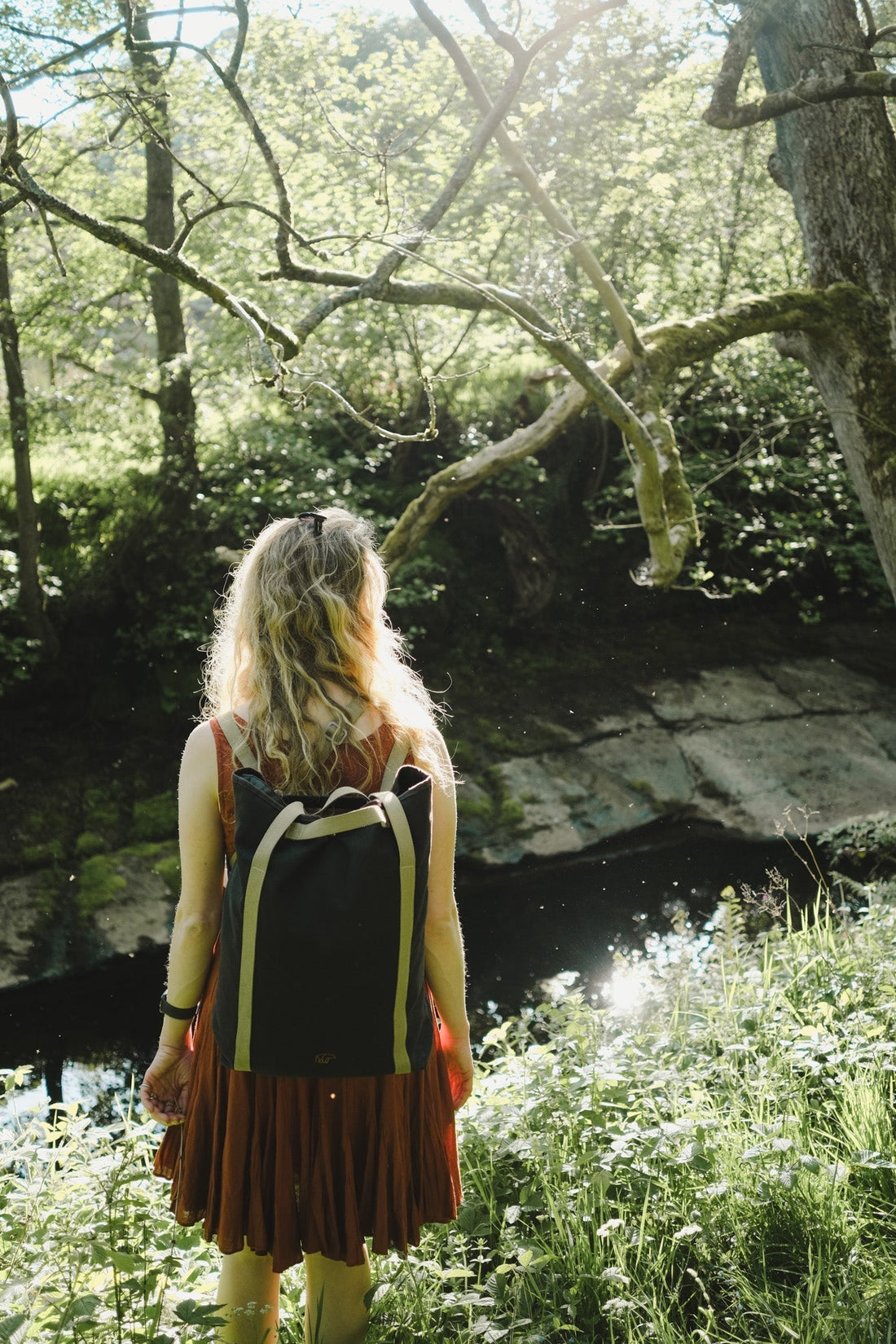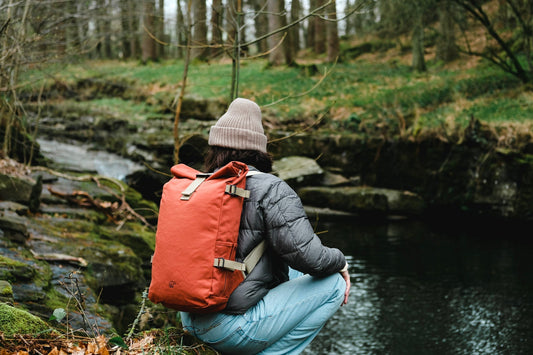
Wildish Swimming: how a bag helped us dip every day for a year.
Share
Around a year and a half ago, we noticed that wild swimming was becoming increasingly popular. The physical and mental health benefits of plunging into often-freezing open bodies of water seemed undeniable, and we wanted to experience them first-hand. There was only one problem: getting into deep, dark chilly water is pretty intimidating, and often requires a lot of kit.
So we came up with our own version. We call it Wildish Swimming. This typically involves a short walk, often with friends, a quick dip in a scenic pool, and a coffee on the riverbank.
This worked so well for us that we did it for 366 days in a row.
It wasn’t easy.
Weather in the UK doesn’t always make getting into cold water look attractive, even if it’s just for a couple of seconds. We did it with a lot of help from our Pateley Tote bag and some other key essentials. Having a bag ready-filled with everything we needed to get outside and into the water made our Wildish Swimming so much simpler, and meant we had no excuse not to go.

Why is the Pateley Tote perfect for wild dipping?
It has a 20 litre capacity - plenty of space for a towel, a change of clothes and a flask of coffee. It has an internal pocket for valuables too.
It’s not quite a dry-bag, but the Pateley Tote is water resistant. Our GOTS-certified dry-waxed canvas is weatherproof, so unless you’re taking your bag into the water with you (not recommended), it will resist the dampest of riverbanks or lakesides to keep your towel and spare pair of socks dry.
You can wear it as a tote bag or as a backpack depending on how far you’re going. Our thick strap webbing has an adaptable design for longer journeys or heavier loads. It’s also made in the uk, with a lifetime guarantee!

What else do we take cold water dipping?
Although it helped us get out the door, we needed more than just our Pateley Tote. Here are some things we found useful for actually getting into the water:
- Towel or poncho: a quick-drying towel/poncho is essential for keeping dry and comfortable during your wild dipping adventures.
-
Puffer change robe: essential in winter and very desirable in summer, it makes the experience a lot more enjoyable. We use one from Vivida.
-
Neoprene boots: these make a huge difference to comfort levels when wild dipping. Nell’s feet get particularly cold and these have made all the difference! These ones from Patagonia are great.
- Waterproof roll mat: for sitting or standing on to avoid getting mucky feet while changing, we love this one from Retribe. It’s made from recycled tents!

The benefits of cold water swimming
For us, wildish swimming feels a bit like hitting the refresh button. It washes our worries away and leaves us feeling both relaxed and full of energy. We don’t do it every day any more, but we really feel the difference on the days we do get into the water.
Physical rejuvenation: dipping into cold water stimulates the release of endorphins and adrenaline, improving blood circulation, boosting the immune system, and enhancing metabolic rate. Regular cold water dips can also contribute to weight loss and muscle toning.
Mental well-being: the shock of cold water acts as a natural stress reliever, clearing the mind and improving overall mood. Cold water dipping has been associated with reduced anxiety and depression, offering a sense of calm and contentment. It's an opportunity to escape the demands of daily life and reconnect with your inner self.
How to find cold water dipping spots
Unlike places for wild swimming, spots for wild dipping are in abundance. After all, you don’t need very much space to dip in a pool.
More often than not, if you are planning a walk and there is a small stream or river somewhere along it, then there will likely be a spot for a dip. Be sensible with it and don’t cross private land to access anything. We typically find spots that run alongside a footpath.

Take it slowly
When we first started wild dipping we would only go in for a few seconds. We started doing it consistently for the first time in January so both the water and the air were freezing. Just getting out of the house and into the river was an achievement. The more we did it, the longer we could comfortably stay in the water. Now we often stay in the water for 3-5 minutes, but there’s no way we could have done that at the start.
We’d recommend starting at 10 seconds and adding an extra 10 seconds each day. You’ll be surprised how quickly you get used to it.
Get warm fast
When you get out of the water it’s important to warm up as quickly as possible. In the summer this is a little easier, but in the colder months, we would never be without our Vivida puffer change robes and a cup of coffee.

Stay safe and leave no trace
Cold water can be dangerous and should always be respected. Here are some essential guidelines to keep in mind when wild dipping.
- Assess the conditions: Look out for strong currents, underwater hazards, sudden weather changes that could pose a risk, and keep an eye out for pollution and blue-green algae. Avoid swimming alone, especially in remote locations, and inform someone about your plans and expected return time.
- Know your limits: be honest about your swimming abilities and never venture into waters that exceed your skill level. Cold water can affect your strength and endurance, so ensure you are confident in your abilities to navigate and stay afloat in challenging conditions.
- Dress for the conditions by wearing suitable swimwear or a wetsuit to protect against cold water. Additionally, consider wearing appropriate footwear to protect your feet from sharp rocks or other underwater hazards.
- Enter the water gradually to give yourself time to acclimatise. Avoid diving or jumping in from heights unless you are certain of the depth and absence of obstacles beneath the surface.
- Be aware of hypothermia, even in warmer months. Keep an eye out for signs of shivering, numbness, or difficulty staying afloat. If you or anyone in your group experiences these symptoms, exit the water immediately and get warm.
- Respect nature and wildlife: wild dipping often takes us into the natural habitats of wildlife. Observe from a distance and avoid disturbing or approaching animals. Remember, we’re guests in their environment.
- Leave No Trace: Preserve the beauty of these pristine locations. Carry away any litter or waste, and avoid introducing chemicals or pollutants into the water.
You can learn more about staying safe whilst wild dipping here.

Wildish swimming allows you to experience the serenity and therapeutic benefits of cold water in an accessible manner, regardless of your swimming skills. It helps you uncover hidden gems in remote locations and allows you to experience those places in a way many others don’t.
Sometimes the most incredible adventures can be found in the simplest moments and the smallest pools.



